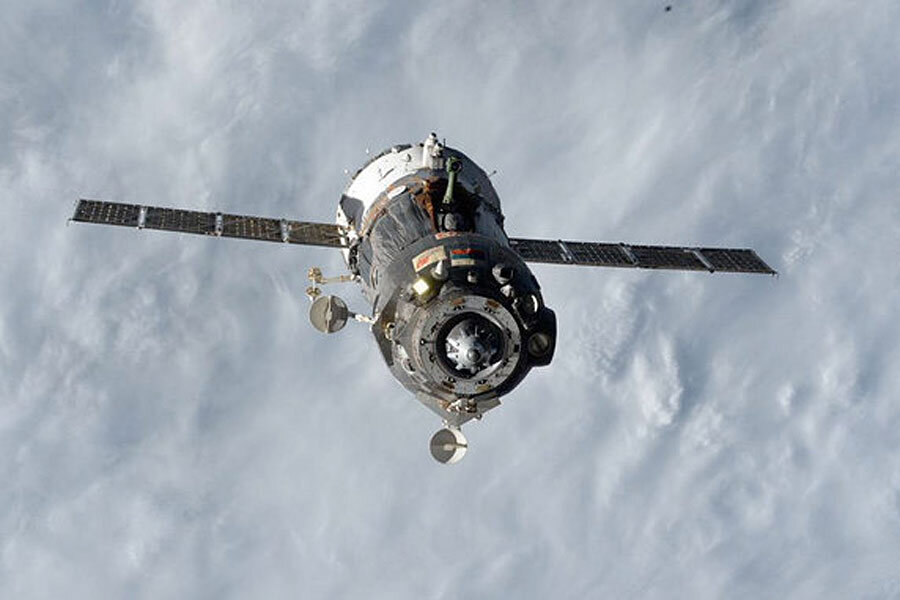Three astronauts return to Earth from space station
Loading...
Three space station crew members have returned home to the Earth after spending nearly 200 days off the planet.
NASA astronaut Terry Virts, cosmonaut Anton Shkaplerov of Russia's federal space agency Roscosmos, and Italian astronaut Samantha Cristoforetti with the European Space Agency (ESA) landed on board Russia's Soyuz TMA-15M spacecraft on the steppe of Kazakhstan Thursday (June 11).
Descending under a parachute to a thruster-assisted soft touchdown at 9:44 a.m. EDT (1344 GMT; 7:44 p.m. local time), the trio's homecoming occurred about a month later than had been planned as Roscosmos worked to recover from the loss of an unmanned cargo vehicle in late April. [Video: Watch the Soyuz Capsule Land with Crew of 3]
"We got to spend 200 days in space together, a few bonus days, but you just couldn't ask for a better group of people to spend this time in space with," Virts said before he and his crewmates left for Earth.
Virts, Shkaplerov and Cristoforetti departed their home of six months on the International Space Station at 6:20 a.m. EDT (1020 GMT) Thursday, officially marking the end of the orbiting complex's 43rd expedition, its second longest mission in its almost 15-year history of being continuously crewed.
Virts on Wednesday handed over command of the station to cosmonaut Gennady Padalka, who is now the first four-time commander of the laboratory. Padalka, together with fellow cosmonaut Mikhail Kornienko and NASA astronaut Scott Kelly, will serve as the station's Expedition 44 crew until the next Soyuz is launched, when they'll be joined by three new crewmembers.
The launch of Soyuz TMA-17M, with Russian cosmonaut Oleg Kononenko, NASA's Kjell Lindgren and Kimiya Yui of the Japan Aerospace Exploration Agency (JAXA), is now targeted for sometime between July 23 and 25. [Amazing Space Photos by Astronaut Terry Virts]
"When you go down from a crew of six to a crew of three, obviously you've lost half of your crew time available so it does have an impact," Kelly said in an interview with CBS News. "But it's an impact we plan for. We used to have a crew of three on board the space station and even at one time a crew of two people, so it's something we can adjust to. And we'll do just that."
Originally, Kelly, Kornienko and Padalka were expected to be alone on the station for only about two weeks, but the loss of Russia's Progress M-37M freighter on April 28 led to Russia delaying the Soyuz TMA-17M flight to late July as its investigation into the cargo craft's failure proceeded. To compensate, the return of the TMA-15M crew was held from May 13 to Thursday morning.
The additional time on orbit resulted in one crew member setting a couple of new records. Cristoforetti, who became the first Italian woman to fly into space when she lifted off with Virts and Shkaplerov in November, logged more time on one flight than any ESA astronaut or woman worldwide, spending a total of 199 days, 16 hours, and 42 minutes off the Earth.
Her prior station crewmates are also poised to set duration records. On June 28, Padalka will pass cosmonaut Sergei Krikalev's total of 803 days for the most time in space on multiple missions, while Kelly and Kornienko are now 75 days into the first year-long expedition on the International Space Station.
Soyuz TMA-15M was both Virts' and Shkaplerov's second space missions. Virts has now logged more than 213 days off Earth, ranking him 14th among the most experienced NASA astronauts. Shkaplerov ended this flight just shy of one year in space over the course of his two long-duration stays on the station, placing him 32nd on the list of space explorers worldwide.
During their time aboard the station, Virts, Shkaplerov and Cristoforetti conducted hundreds of science experiments, oversaw the arrival and departure of cargo vehicles, and assisted with the relocation of the station's supply module, the Leonardo PMM. Virts also ventured outside the station on three spacewalks to route the cables for a new adapter that will allow future Boeing and SpaceX commercial crew spacecraft to dock with the laboratory.
The three also became the first to share space with their own custom LEGO minifigure versions of themselves, and Cristoforetti became the first person to sip from a freshly-brewed cup of Italian espresso using the ISSpresso coffee machine delivered and installed during her stay in space.
Now back on the Earth, the Soyuz TMA-15M crew were to receive brief medical exams before departing by helicopter to the town of Karaganda for a traditional Kazakh welcome ceremony. From there, Shkaplerov will leave for Star City, outside of Moscow, while Virts and Cristoforetti board a jet for NASA's Johnson Space Center in Houston.
Follow collectSPACE.com on Facebook and on Twitter at @collectSPACE. Copyright 2014 collectSPACE.com. All rights reserved.
- Our 10 Favorite Sci-Fi Space Stations of All Time
- Cosmic Quiz: Do You Know the International Space Station?
- Touchdown! Space Station Expedition 43 Crew Lands In Kazakhstan
- Space Photos: Astronaut Samantha Cristoforetti's on ISS
Copyright 2015 SPACE.com, a Purch company. All rights reserved. This material may not be published, broadcast, rewritten or redistributed.







